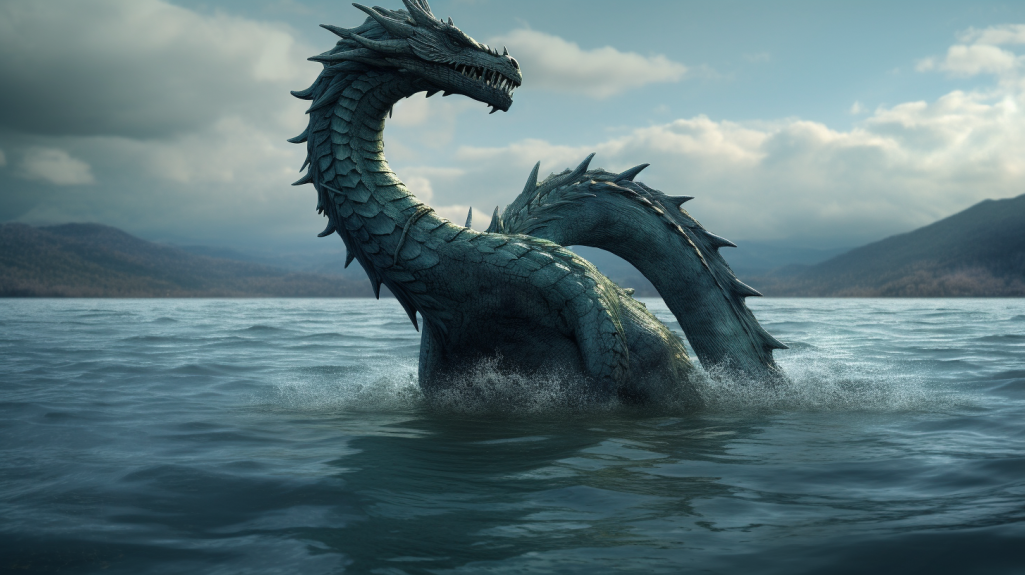Nestled in the heart of the Scottish Highlands, Loch Ness is a place of unparalleled natural beauty, surrounded by lush green hills and shrouded in an air of mystery. However, it is not the scenic landscapes or the ancient castles that make Loch Ness famous around the world; it is the enigmatic creature that allegedly lurks beneath its deep, dark waters – the Loch Ness Monster, affectionately known as Nessie.
A Tale of Ancient Origins
The legend of the Loch Ness Monster dates back centuries, with the earliest known account of a strange aquatic beast in the area recorded in the 6th century. The tale tells of an Irish monk named St. Columba, who reportedly encountered a water beast in the River Ness. According to the legend, St. Columba confronted the creature and banished it to the river’s depths after it had attacked a man.
However, it wasn’t until the 20th century that the legend gained widespread attention, captivating the imaginations of people around the world. The modern fascination with Nessie began in the 1930s when a series of alleged sightings and photographs brought the creature into the limelight.
Sightings and Speculations
Over the years, numerous eyewitness accounts have been reported, describing Nessie as a large, long-necked creature with humps protruding from the water. Some claim it resembles a plesiosaur, a type of marine reptile that existed millions of years ago, while others suggest it could be a giant fish or a surviving prehistoric creature.
The most famous photograph purporting to show Nessie was taken in 1934 by Robert Kenneth Wilson. The image, known as the “Surgeon’s Photograph,” depicted a serpentine neck and head rising out of the water. For decades, this photograph served as one of the most iconic pieces of evidence supporting Nessie’s existence. However, in later years, skeptics questioned its authenticity, casting doubt on the credibility of the entire phenomenon.
Scientific Investigations and Discoveries
Intrigued by the mystery of Nessie, scientists, and researchers have conducted numerous investigations in an attempt to uncover the truth behind the legend. Sonar scans, underwater expeditions, and DNA analysis have all been employed to search for evidence of the creature’s existence.
While some studies have yielded inconclusive results, others have debunked certain claims. For instance, sonar surveys of Loch Ness have failed to provide conclusive evidence of a large unknown creature inhabiting its depths. Additionally, DNA studies conducted in recent years have suggested that the sightings could be attributed to misidentifications of known animals or floating debris.
The Cultural Impact
Despite the lack of definitive scientific evidence, Nessie has become an enduring symbol of mystery and intrigue. The legend has permeated popular culture, inspiring books, movies, and countless tourist attractions in the vicinity of Loch Ness. The creature’s image adorns postcards, merchandise, and various media, making Nessie a beloved icon in the hearts of many.
Moreover, the legend of the Loch Ness Monster continues to draw tourists and enthusiasts from around the globe. The area around Loch Ness has become a hub for cryptozoologists, scientists who study hidden or unknown animals, as well as curious travelers hoping to catch a glimpse of the elusive creature.
Theories and Conclusions
As the legend of the Loch Ness Monster persists, various theories have emerged to explain the reported sightings. Some proponents argue that Nessie could be a surviving population of plesiosaurs or another prehistoric marine reptile that somehow escaped extinction. Others suggest that the sightings are hoaxes, optical illusions, or misidentifications of known animals, such as otters, seals, or large fish.
In the absence of concrete evidence, the true nature of Nessie remains one of the greatest mysteries of our time. Whether it is a fantastical creature residing in the depths of Loch Ness or a product of human imagination and folklore, the legend of the Loch Ness Monster continues to captivate our imagination and remind us of the enduring allure of the unknown.
In Conclusion
The legend of the Loch Ness Monster, with its roots in ancient folklore and its modern resurgence in the 20th century, represents the perfect blend of mystery and imagination. Whether Nessie is a real, flesh-and-blood creature or simply a figment of our collective imagination, there is no denying the impact it has had on popular culture and the human fascination with the unknown.
As long as the waters of Loch Ness continue to ripple and the shadows dance beneath its surface, the legend of Nessie will endure, reminding us that some mysteries are best left unsolved, allowing the imagination to roam freely in the realm of the unknown, where legends and reality often intertwine in the most enchanting ways.
